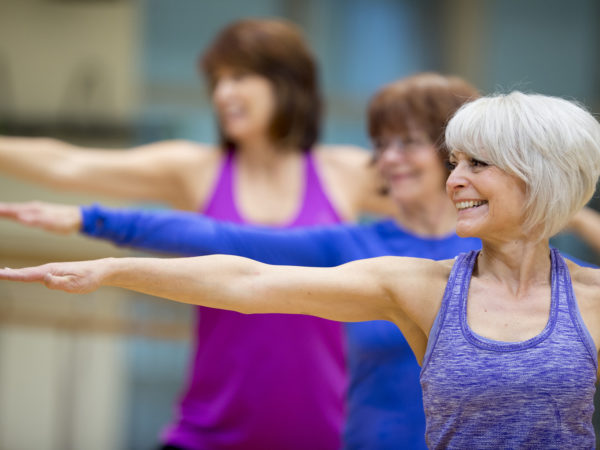Too Old For Yoga?
I’m going to be 70 soon and haven’t done much in the way of exercise for years. I would like to try yoga but am not especially limber. Am I too old to start now?
Andrew Weil, M.D. | February 27, 2017

I’m glad to hear you’re thinking about exercise and are considering yoga. The quick answer to your question is, “No, you’re definitely not too old to begin.” A recent survey by the Yoga Alliance and Yoga Journal found that 38 percent of people in the U.S. now practicing yoga are age 50 and older. And there’s little doubt that practicing yoga can help enhance seniors’ health. Studies have shown that performing yoga regularly can help lower blood pressure, strengthen bones, protect joints, improve strength and balance and reduce anxiety.
In addition, a study from UCLA published in April 2016 found that practicing yoga in conjunction with daily meditation at home for three months was more effective than brain training exercises in helping individuals in their mid 50s improve their memory.
After 12 weeks, the researchers found that participants who attended a weekly yoga class and practiced meditation at home showed better visual-spatial memory skills (the kind needed to remember your destination and planned route when walking or driving) than did those in a group that received a weekly hour of memory enhancement training and performed memory exercises at home. The individuals in the yoga/meditation group also had less depression and anxiety, as well as improved coping skills and resilience in response to stress.
Another study published in 2016 found that 227 participants (202 were women) who performed 12 assigned yoga poses (either daily or every other day) and held those poses for 30 seconds showed improved bone density in the spine and femur. Benefits to the hip were observed as well in these women, but those results weren’t statistically significant. The participants average age was 68, and 83 percent of them already had osteoporosis or osteopenia (the condition that may precede osteoporosis). The daily yoga routine used in the study took 12 minutes to complete.
You can learn yoga from a DVD, video or a book on your own at home, but I encourage you to look for classes designed for seniors and led by experienced instructors. An Internet search should help you find appropriate classes in your area. If you have any ongoing health problems or physical limitations, be sure to discuss them with the studio owner or your instructor before signing up. Yoga poses can be modified, and props – including blocks, straps and cushions – can help you deal with limited flexibility. With yoga, as with any form of exercise, you must listen to your body and stop assuming any posture that causes significant pain.
Yoga is one of the best forms of non-aerobic exercise for improving muscle tone, flexibility, and balance. Beyond that, it can help people feel calmer and more balanced emotionally and spiritually.
Andrew Weil, M.D.
Sources:
Debbie L. Cohen et al, “Blood Pressure Effects of Yoga, Alone or in Combination With Lifestyle Measures: Results of the Lifestyle Modification and Blood Pressure Study (LIMBS).” Journal of Clinical Hypertension, January15, 2016, DOI: 10.1111/jch.12772
Helen Lavretsky and Harris Eyre et al, “Changes in Neural Connectivity and Memory Following a Yoga Intervention for Older Adults: A Pilot Study.” Journal of Alzheimer’s Disease, April 5, 2016, doi: 10.3233/JAD-150653.
Loren M. Fishman et al, “Twelve-Minute Daily Yoga Regimen Reverses Osteoporotic Bone Loss.” Topics in Geriatric Rehabilitation, April/June 2016, doi: 10.1097/TGR.0000000000000085










